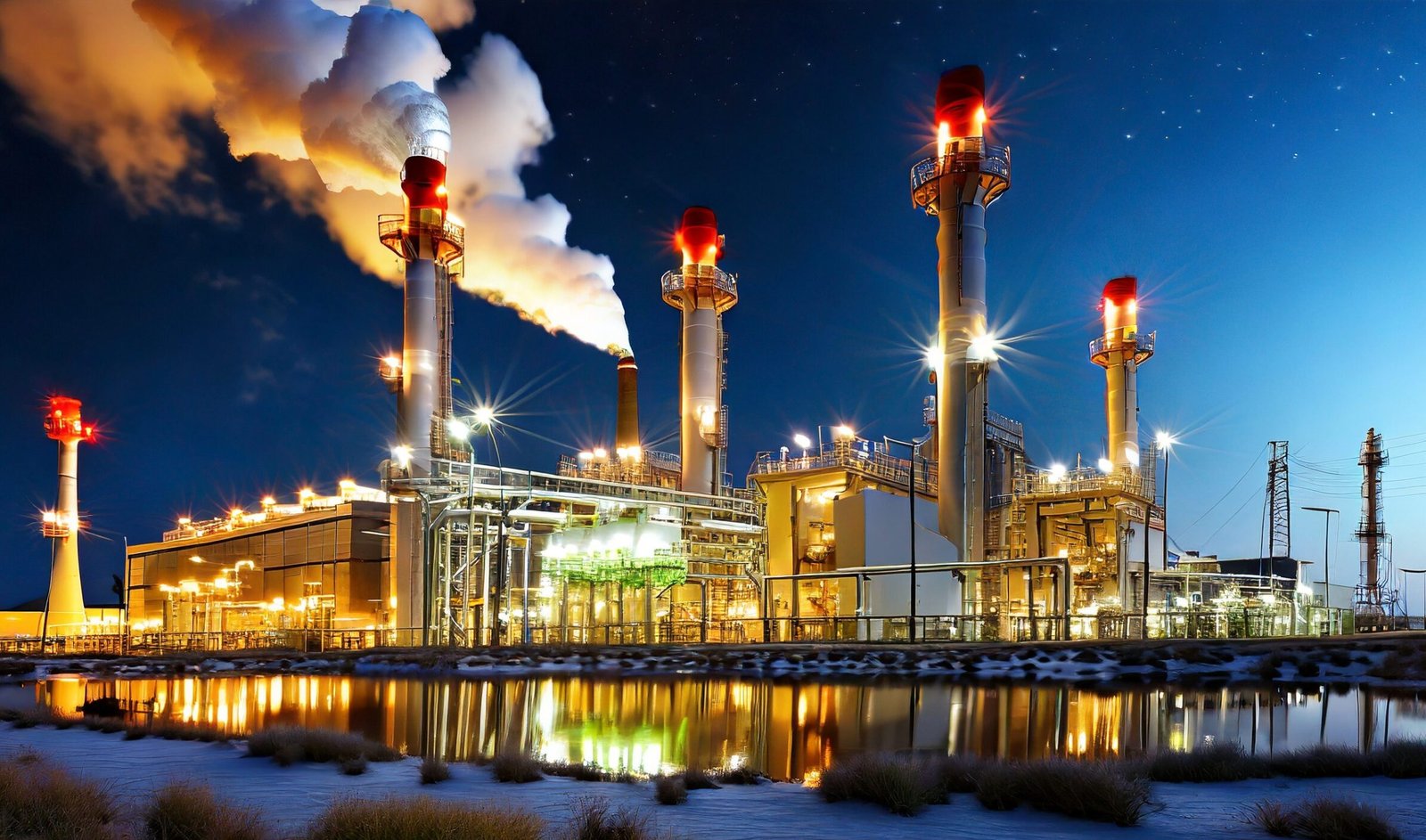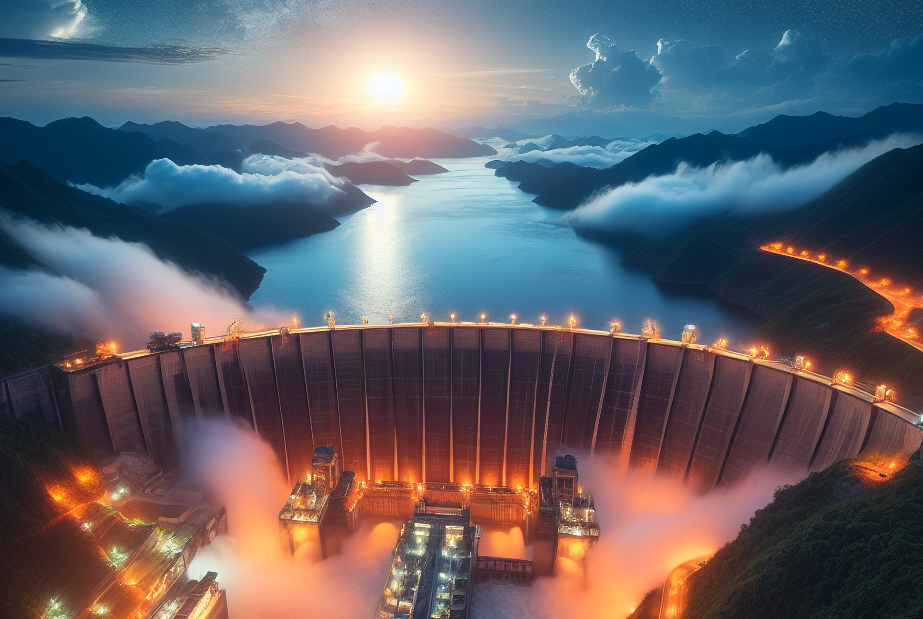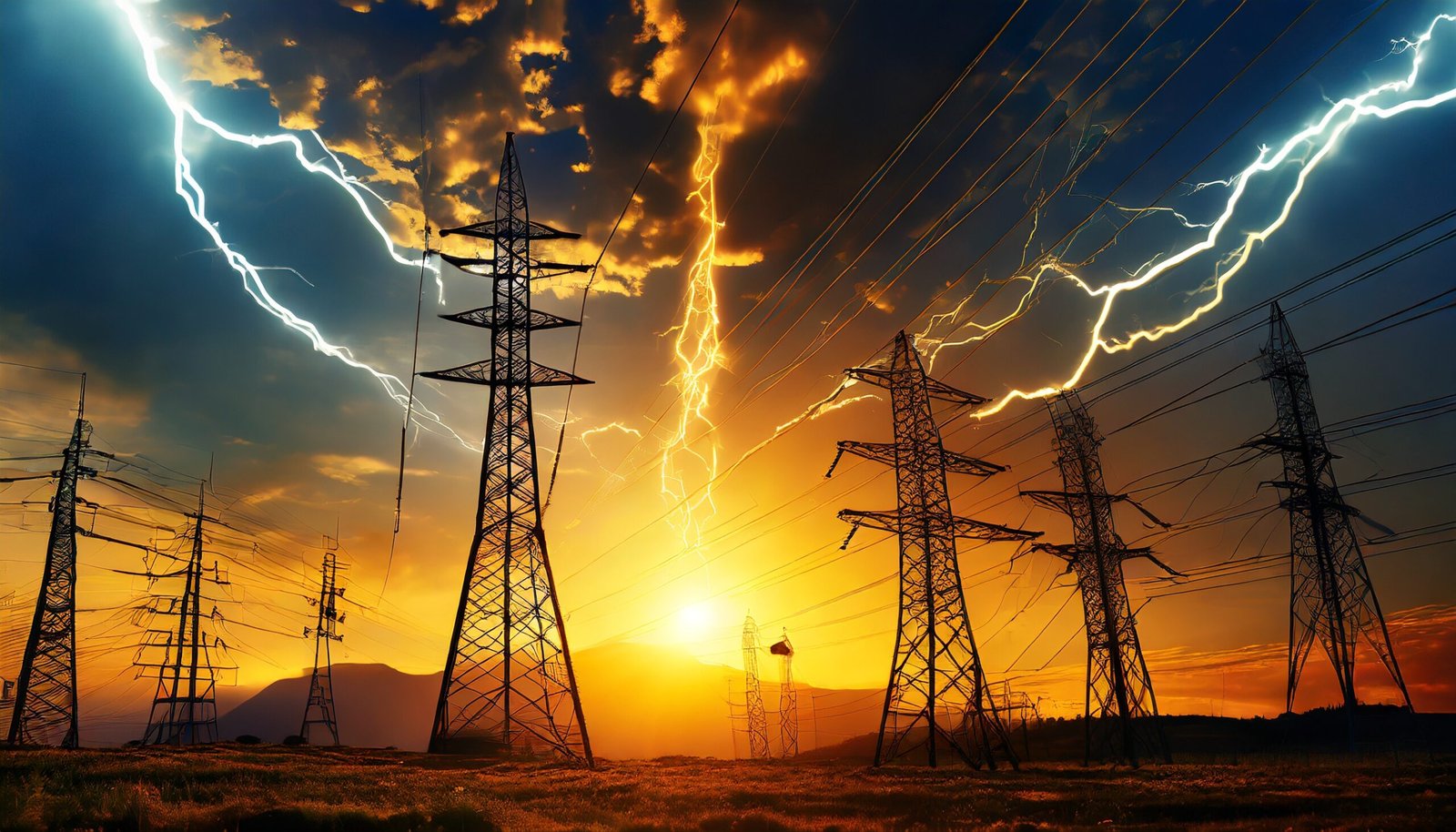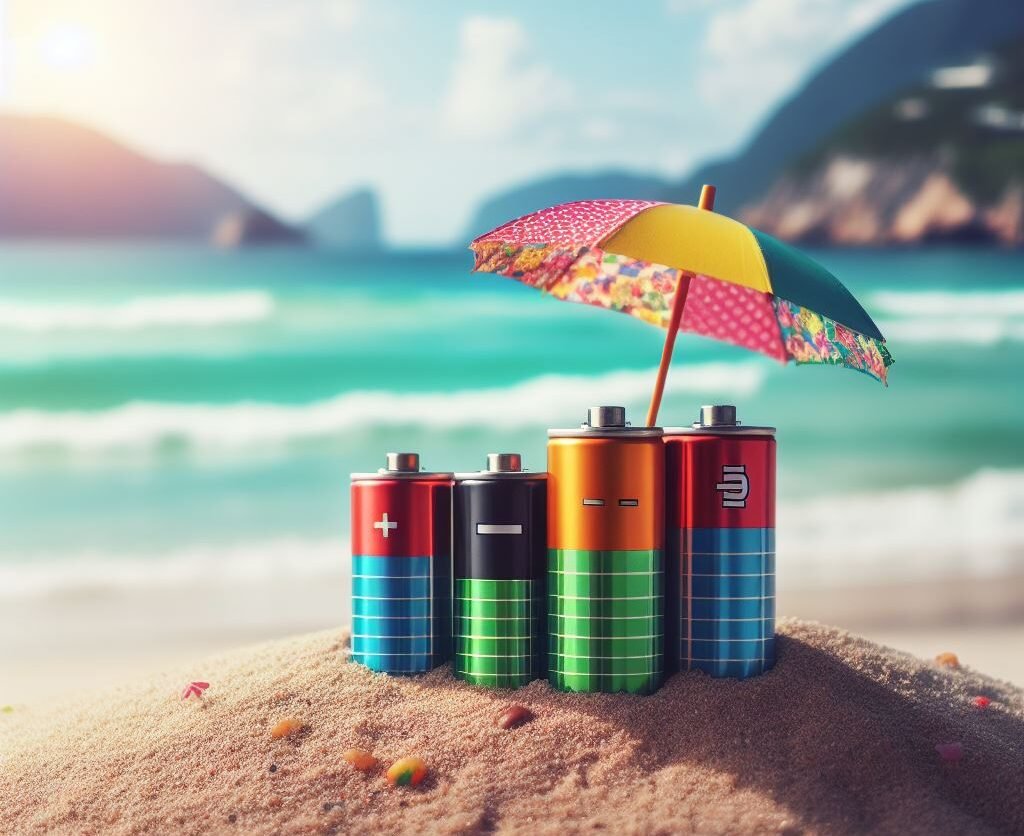The power grid, also known as the electrical grid or electric power grid, is a complex system of interconnected electrical components designed to generate, transmit, and distribute electricity. It forms the backbone of our modern electrical infrastructure, providing the energy needed to power homes, businesses, and industries.
Power Generation: Electricity is generated at power plants, which can use various energy sources such as coal, natural gas, nuclear, hydroelectric, wind, and solar. These power plants convert energy from these sources into electrical energy.
Transmission: Once electricity is generated, it is transmitted over long distances through a network of high-voltage transmission lines. These lines help transport electricity from power plants to distribution centres and, ultimately, to end-users.
Distribution: Distribution lines then carry electricity from the transmission system to local communities. Transformers are used to reduce the voltage to a level suitable for use in homes and businesses.
Substations: Along the way, substations are strategically placed to manage voltage levels, reroute power as needed, and ensure a stable and reliable flow of electricity.
Consumption: Electricity reaches end-users, including homes, businesses, and industries, through local distribution lines. This is the final stage where electrical energy is utilized to power various devices and systems.
The power grid operates on the principle of balancing supply and demand in real time. Grid operators continually monitor the system, making adjustments to generation and distribution to maintain a stable and reliable power supply. Advanced technologies, such as smart grids, are being developed to enhance efficiency, reliability, and the integration of renewable energy sources.
Power Generation from Coal:
One significant component of the power grid is the generation of electricity from coal. Coal-fired power plants have historically been a major source of electrical energy. In these plants, coal is burned to produce heat, which is then used to convert water into steam. The steam drives turbines connected to generators, ultimately producing electricity.
Despite being a traditional and reliable source of power, coal-based generation has faced increased scrutiny due to environmental concerns. The combustion of coal releases carbon dioxide (CO2) and other pollutants into the atmosphere, contributing to air pollution and climate change. In response to these environmental challenges, there has been a growing emphasis on cleaner and more sustainable energy sources.
Many countries are actively working to transition away from coal and invest in cleaner alternatives, such as renewable energy (wind, solar, and hydroelectric power) and low-carbon technologies. This transition is driven by a commitment to reduce greenhouse gas emissions and mitigate the impact of climate change.
Natural Gas in the Power Grid:

Natural gas has become a significant player in the power grid, offering a versatile and cleaner-burning alternative to traditional fossil fuels. Here’s an overview of how natural gas integrates into the power grid:
Power Plants: Natural gas power plants play a crucial role in electricity generation. These plants use natural gas as a fuel source to produce high-pressure steam, which then drives turbines connected to generators. The combustion of natural gas is relatively cleaner compared to coal, emitting fewer pollutants such as sulfur dioxide and particulate matter.
Combined Cycle Power Plants: Many modern natural gas power plants are designed as combined cycle plants. These plants utilize both gas and steam turbines to maximize efficiency. The hot exhaust gases from the gas turbine are used to generate steam, which then drives a steam turbine to produce additional electricity.
Flexibility and Reliability: Natural gas power plants are known for their flexibility and quick start-up times, making them well-suited for meeting fluctuating electricity demand. This flexibility allows natural gas plants to serve as a reliable source of power that can quickly respond to changes in demand or the intermittent nature of renewable energy sources.
Transmission and Distribution: Like other power sources, natural gas power plants are connected to the power grid through transmission lines. Natural gas is also transported through pipelines to distribution points where it can be used for electricity generation or other applications, such as heating.
Environmental Considerations: While natural gas is considered a cleaner-burning fossil fuel compared to coal, it still releases carbon dioxide when burned. As the world focuses on reducing greenhouse gas emissions, there is an increasing emphasis on developing technologies such as carbon capture and storage (CCS) to mitigate the environmental impact of natural gas combustion.
Natural gas’s role in the power grid reflects its ability to provide a balance between reliability, flexibility, and reduced environmental impact compared to some traditional fossil fuels. As the energy landscape evolves, there is an ongoing exploration of ways to further enhance the sustainability of natural gas use within the broader context of a diversified and resilient energy portfolio.
Nuclear Power in the Power Grid:
Nuclear power is a form of energy generated through the controlled release of nuclear reactions. It has been a significant contributor to electricity generation, offering a high energy density and low greenhouse gas emissions. Here’s an overview of how nuclear power integrates into the power grid:
Nuclear Reactors: Nuclear power plants house reactors where controlled nuclear fission reactions take place. In these reactions, the nucleus of an atom is split into smaller parts, releasing a significant amount of energy in the process. The primary fuel for nuclear reactors is usually uranium or plutonium.
Steam Generation: The heat produced by nuclear fission is used to generate steam from water. This steam then drives turbines connected to generators, converting the thermal energy into electricity.
Base Load Power: Nuclear power is often classified as a “base load” power source, meaning it provides a continuous and reliable supply of electricity. Unlike some renewable sources with intermittent generation patterns, nuclear power plants can operate at a steady output, contributing to grid stability.
Low Greenhouse Gas Emissions: Nuclear power generation produces electricity with low greenhouse gas emissions compared to fossil fuels. It is considered a low-carbon or even carbon-neutral energy source during operation.
Long Operating Lifespan: Nuclear power plants have a long operating lifespan, typically exceeding several decades. This longevity contributes to their role in providing a stable and consistent source of electricity.
Waste Management and Safety Concerns: One of the significant challenges associated with nuclear power is the management of radioactive waste generated during the fission process. Proper disposal and containment of nuclear waste are critical considerations. Additionally, safety concerns, highlighted by events like the Chornobyl disaster and Fukushima Daiichi nuclear disaster, underscore the importance of stringent safety measures in the design and operation of nuclear power plants.
Technological Advances: Ongoing research and development in nuclear technology aim to address challenges such as waste management, safety, and the development of advanced reactor designs, including small modular reactors (SMRs) and next-generation nuclear technologies.
Nuclear power continues to be a topic of debate, balancing its benefits in providing reliable, low-carbon energy with the challenges of waste management and safety concerns. As countries explore a mix of energy sources for their grids, nuclear power remains a part of the discussion about achieving a sustainable and resilient energy future.
Hydroelectric Power in the Power Grid:

Hydroelectric power, generated by harnessing the energy of flowing water, is a longstanding and reliable contributor to the power grid. This renewable energy source plays a crucial role in providing clean and sustainable electricity. Here’s an overview of how hydroelectric power integrates into the power grid:
Dams and Reservoirs: Hydroelectric power plants typically utilize dams to create reservoirs of water. The potential energy stored in elevated water is then converted into electricity. When electricity demand is high, water is released from the reservoir, flowing through turbines that drive generators.
Turbines and Generators: The flowing water turns turbines connected to generators, transforming the mechanical energy into electrical energy. The amount of electricity generated depends on factors such as the volume of water flow and the height from which it falls.
Transmission: Hydroelectric power plants are often strategically located near water sources and are connected to the power grid through transmission lines. The generated electricity is transmitted over these lines to substations and distributed to end-users.
Environmental Considerations: While hydroelectric power is a clean and renewable energy source, it is not without environmental considerations. The construction of dams and alterations to river ecosystems can impact local wildlife and aquatic habitats. Modern hydroelectric projects often incorporate environmental assessments and measures to mitigate these impacts.
Base Load Power: Hydroelectric power is considered a “base load” power source, meaning it provides a constant and reliable supply of electricity. Unlike some renewable sources with intermittent generation patterns, hydroelectric power can operate consistently, contributing to grid stability.
Hydroelectric power’s role in the power grid underscores its importance in the transition to a more sustainable energy future. Its ability to provide reliable and consistent electricity, coupled with advancements in technology and environmental management, positions hydroelectric power as a valuable component of the diversified energy mix.
Wind Power in the Power Grid
An increasingly prominent player in the modern power grid is wind power, a renewable energy source harnessed through wind turbines. Wind turbines convert the kinetic energy of the wind into electricity, offering a clean and sustainable alternative to traditional fossil fuel-based generation.
Wind power’s integration into the power grid involves the following key steps:
- Wind Turbines: Tall towers with large blades capture the kinetic energy of the wind, causing the blades to spin. This rotational motion drives a generator, converting the mechanical energy into electrical energy.
- Transmission: Wind farms, often located in areas with strong and consistent wind patterns, are connected to the power grid through a network of transmission lines. These lines transport the generated electricity from the wind turbines to substations and into the broader grid.
- Intermittency Challenges: One of the challenges associated with wind power is its intermittency; the wind doesn’t always blow consistently. To address this, grid operators use advanced forecasting tools to predict wind patterns and balance the variability by adjusting power generation from other sources.
- Complementary Technologies: To enhance the reliability of wind power, complementary technologies like energy storage systems and smart grid management are being explored. Energy storage allows excess power generated during high wind periods to be stored for use when the wind is calm.
Wind power’s role in the power grid is a crucial component of the global transition to more sustainable energy sources. Its clean and renewable nature aligns with efforts to reduce greenhouse gas emissions and combat climate change. As technology advances, wind power continues to play an expanding role in the diversified and resilient energy mix that powers our homes, businesses, and industries.
Solar Power in the Power Grid
Solar power, derived from harnessing the energy of the sun, has emerged as a key player in the modern power grid. This renewable energy source offers a clean and sustainable solution to electricity generation. Here’s an overview of how solar power integrates into the power grid:
Photovoltaic (PV) Cells: Solar power is primarily generated through photovoltaic (PV) cells, which convert sunlight directly into electricity. These cells, often grouped together in solar panels, contain semiconductor materials that release electrons when exposed to sunlight, creating an electric current.
Solar Farms and Rooftop Installations: Solar power can be generated on a large scale through solar farms, where arrays of solar panels are installed over a vast area. Additionally, solar panels are commonly installed on rooftops of homes, businesses, and other structures for decentralized energy production.
Grid Connection and Net Metering: Solar power systems are connected to the power grid through inverters, which convert the direct current (DC) generated by the solar panels into alternating current (AC) compatible with the grid. In some regions, net metering allows excess electricity generated by solar systems to be fed back into the grid, providing credit or compensation to the solar power system owner.
Intermittency and Energy Storage: One challenge with solar power is its intermittent nature due to weather conditions and the day-night cycle. To address this, energy storage systems, such as batteries, are increasingly integrated with solar installations. These systems store excess energy generated during sunny periods for use when sunlight is limited.
Environmental Benefits: Solar power is a clean and renewable energy source with minimal environmental impact during operation. It reduces reliance on fossil fuels, mitigates air pollution, and helps combat climate change by reducing greenhouse gas emissions.
Advancements in Technology: Ongoing advancements in solar technology, including efficiency improvements and decreases in cost, contribute to the increasing adoption of solar power on both large and small scales.
As the world transitions towards a more sustainable energy future, solar power continues to play a pivotal role in the diversification of the power grid. Its ability to harness abundant sunlight and provide environmentally friendly electricity aligns with global efforts to reduce carbon emissions and build a resilient and sustainable energy infrastructure.
In conclusion: The evolution and diversification of the power grid reflect a dynamic response to the challenges and opportunities in our rapidly changing energy landscape. From traditional sources like coal and natural gas to the rise of renewable energies such as wind and solar, each component contributes to the intricate web that powers our societies. As we navigate the delicate balance between meeting growing energy demands and addressing environmental concerns, the power grid stands as a testament to human innovation and the pursuit of a sustainable energy future.
The ongoing transition towards cleaner and more sustainable energy sources underscores a global commitment to mitigating climate change and reducing our carbon footprint. The power grid’s resilience and adaptability are crucial as we integrate diverse technologies, embrace smart grid solutions, and explore advanced methods of energy storage.
Discussion
If you have thoughts, questions, or insights about the current state and future trajectory of the power grid, we invite you to share your perspective. How do you envision the role of different energy sources in the grid’s future? What challenges and opportunities do you foresee in the ongoing transition to a more sustainable energy infrastructure? Engaging in this discussion allows us to collectively explore ideas, foster understanding, and contribute to the dialogue surrounding our shared energy future. Your voice in this conversation is valuable as we navigate the complexities of powering our world while striving for a greener, more resilient future.






